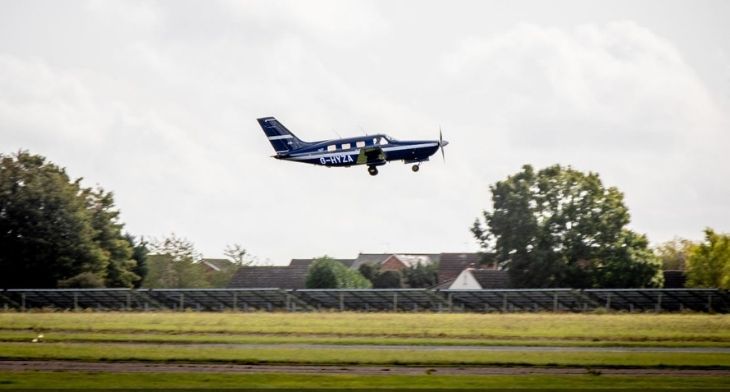


Cranfield Airport in the UK celebrated a major milestone last week, when ZeroAvia completed the world’s first ever hydrogen fuel cell powered flight of a commercial-grade aircraft on 23 September.
Commenting on the achievement, Val Miftakhov, CEO, ZeroAvia, said: “While some experimental aircraft have flwon using hydrogen fuel cells as a power source, the size of this commercially available aircraft shows that paying passengers could be boarding a truly zero-emission flight very soon. ”
The flight took place at the company’s R&D facility with the Piper M-class six-seat plane completing taxi, takeoff, a full pattern circuit and landing. It marked the first step to realising the transformational possibilities for moving from fossil fuels to zero-emissions hydrogen as the primary energy source for commercial aviation.
A significant step on the road to commercial zero-emission flight, ZeroAvia’s flight is part of the HyFlyer project, a sequential R&D programme supported by the UK Government. It follows the UK’s first ever commercial-scaled batter-electric flight, which was conducted in the same aircraft in June 2020.
Next up and the the final stage for ZeroAvia’s six-seat development programme is a 250-mile zero emissions flight from an airfield in Orkney before the end of the year. The exciting element of this demonstration flight will be that the range is roughly equivalent to major commuter routes such as London to Edinburgh or Los Angeles to San Francisco.
While hydrogen’s potential to fuel the future of climate friendly flying is nothing new, its ability to offer a viable alternative to aviation fuel has been hampered by the lack of dedicated hydrogen fuelling infrastructure, which is needed for both production as well as distribution and storage at airports. However, to help overcome that ZeroAvia, alongside its partner the European Marine Energy Centre (EMEC), has developed the Hydrogen Refuelling Ecosystem (HARE) at Cranfield Airport. It’s essentially a microcosm of what the hydrogen airport ecosystem will look like in terms of green hydrogen production, storage, refuelling and fuel cell powered-flight. This also marks another world first – a fully operational hydrogen production and refuelling airport facility for primary commercial aircraft production.





